Unearthing the World of Jesus
Surprising archaeological finds are breaking new ground in our understanding of Jesus’s time—and the revolution he launched 2,000 years ago
/https://tf-cmsv2-smithsonianmag-media.s3.amazonaws.com/filer/f8/a9/f8a98179-10f2-426d-b494-2d0fa230dc00/janfeb2016_i16_historicaljesus.jpg)
As he paced the dusty shoreline of the Sea of Galilee, Father Juan Solana had a less-than-charitable thought about the archaeologists from the Israel Antiquities Authority: He wanted them to go away.
Everything else had fallen into place for the Christian retreat he planned to build here. Just up the road was the “evangelical triangle” of Capernaum, Chorazin and Bethsaida, the villages where, according to the Gospels, Jesus mesmerized crowds with his miraculous acts and teachings. Across the modern two-lane highway was a small town Israelis still call Migdal, because it was the presumed site of Magdala, the ancient fishing city that was home to Mary Magdalene, one of Jesus’s most loyal followers.
Solana is an urbane, silver-haired priest with the Legionaries of Christ, a Catholic order founded in Mexico. By that summer of 2009, he’d already raised $20 million for his retreat, which he was calling the “Magdala Center.” He’d bought four adjoining parcels of waterfront land. He’d gotten building permits for a chapel and a guesthouse with more than 100 rooms. Just three months earlier, Pope Benedict XVI had personally blessed the cornerstone. All that remained now was an irksome bit of red tape: a “salvage excavation,” a routine dig by the Israeli government to ensure that no important ruins lay beneath the proposed building site.
The IAA archaeologists had mucked around on Solana’s 20 acres for a month and found little. “Almost done?” he’d ask, emerging in his clerical robes from a shipping container that served as a makeshift office. “I have a budget! I have a timetable!”
In truth, the archaeologists didn’t want to be there either. Summer temperatures had ticked into the 100s, and the site prickled with bees and mosquitoes. They’d say shalom, they assured the priest, as soon as they checked a final, remote corner of his land.
It was there, beneath a wing of the proposed guesthouse, that their picks clinked against the top of a buried wall.
Dina Avshalom-Gorni, an IAA official who oversaw digs in northern Israel, ordered all hands to this square of the excavation grid. The workers squatted in the mealy soil and dusted carefully with brushes. Soon, a series of rough-cut stone benches emerged around what looked like a sanctuary.
It can’t be, Avshalom-Gorni thought.
The Gospels say that Jesus taught and “proclaimed the good news” in synagogues “throughout all Galilee.” But despite decades of digging in the towns Jesus visited, no early first-century synagogue had ever been found.
**********
For historians, this was not a serious problem. Galilean Jews were a week’s walk from Jerusalem, close enough for regular pilgrimages to Herod the Great’s magnificent temple, Judaism’s central house of worship. Galileans, mostly poor peasants and fishermen, had neither the need nor the funds for some local spinoff. Synagogues, as we understand them today, did not appear anywhere in great numbers until several hundred years later. If there were any in Galilee in Jesus’s day, they were perhaps just ordinary houses that doubled as meeting places for local Jews. Some scholars argued that the “synagogues” in the New Testament were nothing more than anachronisms slipped in by the Gospels’ authors, who were writing outside Galilee decades after Jesus’s death.
But as Avshalom-Gorni stood at the edge of the pit, studying the arrangement of benches along the walls, she could no longer deny it: They’d found a synagogue from the time of Jesus, in the hometown of Mary Magdalene. Though big enough for just 200 people, it was, for its time and place, opulent. It had a mosaic floor; frescoes in pleasing geometries of red, yellow and blue; separate chambers for public Torah readings, private study and storage of the scrolls; a bowl outside for the ritual washing of hands.
In the center of the sanctuary, the archaeologists unearthed a mysterious stone block, the size of a toy chest, unlike anything anyone had seen before. Carved onto its faces were a seven-branched menorah, a chariot of fire and a hoard of symbols associated with the most hallowed precincts of the Jerusalem temple. The stone is already seen as one of the most important discoveries in biblical archaeology in decades. Though its imagery and function remain in the earliest stages of analysis, scholars say it could lead to new understandings of the forces that made Galilee such fertile ground for a Jewish carpenter with a world-changing message. It could help explain, in other words, how a backwater of northern Israel became the launching pad for Christianity.
But on that dusty afternoon, Solana had no way of knowing this. He was toweling off after a swim when an IAA archaeologist named Arfan Najar called his cellphone with what seemed like the worst possible news: They’d found something, and everything Solana had worked and prayed for these past five years was on hold.
“Father,” Najar told him, “you have a big, big, big problem.”
**********
The 19th-century French theologian and explorer Ernest Renan called the Galilean landscape the “fifth Gospel,” a “torn, but still legible” tableau of grit and stone that gave “form” and “solidity” to the central texts about Jesus’s life—the Gospels of Matthew, Mark, Luke and John. Renan’s somewhat romantic views were not unlike those of the tourists whose gleaming buses I got stuck behind last summer on the road to places like Nazareth and Capernaum; pilgrims have long come to these biblical lands hoping to find what Renan called “the striking agreement of the texts with the places.”
Modern archaeologists working here, however, are less interested in “proving” the Bible than in uncovering facts and context absent from the texts. What religion did ordinary people practice? How did Galileans respond to the arrival of Greek culture and Roman rule? How close did they feel to the priestly elites in Jerusalem? What did they do for work? What, for that matter, did they eat?
The Gospels themselves provide only glancing answers; their purpose is spiritual inspiration, not historical documentation. As for actual firsthand accounts of Galilean life in the first century, only one survives, written by a Jewish military commander named Josephus. This has made archaeology the most fruitful source of new information about Jesus’s world. Each layer of dirt, or stratum, is like a new page, and with much of Galilee still unexcavated, many chapters of this Fifth Gospel remain unread.
The ground, in both Galilee and Jerusalem, has disgorged a few stunners. In 1968, a skeletal heel nailed to a board by an iron spike was found in an ossuary, or bone box, inside a first-century tomb near Jerusalem. The heel, which belonged to a man named Yehochanan, helped settle a long-simmering debate about the plausibility of Gospel accounts of Jesus’s tomb burial. Crucifixion was a punishment reserved for the dregs of society, and some experts had scoffed at the idea that Romans would accord anyone so dispatched the dignity of a proper interment. More likely, Jesus’s remains, like those of other common criminals, would have been left to rot on the cross or tossed into a ditch, a fate that might have complicated the resurrection narrative. But Yehochanan’s heel offered an example of a crucified man from Jesus’s day for whom the Romans permitted Jewish burial.
In 1986, after a drought depleted water levels in the Sea of Galilee (which is actually a lake), two brothers walking alongshore found a submerged first-century fishing vessel with seats for 12 passengers and an oarsman. The wooden boat made headlines the world over as an example of the type Jesus and his disciples would have used to cross the lake—and from which, according to the Gospels, Jesus famously calmed a storm.
Such discoveries were thrilling, but limited: one boat, one heel. And many blockbusters—notably an ossuary inscribed “James, son of Joseph, brother of Jesus”—have been so fraught with questions of provenance and authenticity that they have produced more controversy than insight.
The ultimate find—physical proof of Jesus himself—has also been elusory. “The sorts of evidence other historical figures leave behind are not the sort we’d expect with Jesus,” says Mark Chancey, a religious studies professor at Southern Methodist University and a leading authority on Galilean history. “He wasn’t a political leader, so we don’t have coins, for example, that have his bust or name. He wasn’t a sufficiently high-profile social leader to leave behind inscriptions. In his own lifetime, he was a marginal figure and he was active in marginalized circles.”
What archaeologists have begun to recover is Jesus’s world—the beat of everyday life in the fishing villages where he is said to have planted the seeds of a movement. The deepest insights have come from millions of “small finds” gathered over decades of painstaking excavation: pottery shards, coins, glassware, animal bones, fishing hooks, cobbled streets, courtyard houses and other simple structures.
Before such discoveries, a long line of (mostly Christian) theologians had sought to reinterpret the New Testament in a way that stripped Jesus of his Judaism. Depending on the writer, Jesus was either a man who, though nominally Jewish, wandered freely among pagans; or he was a secular gadfly inspired less by the Hebrews than by the Greek Cynics, shaggy-haired loners who roamed the countryside irritating the powers that be with biting one-liners.
Archaeology showed once and for all that the people and places closest to Jesus were deeply Jewish. To judge by the bone finds, Galileans didn’t eat pig. To judge by the limestone jugs, they stored liquids in vessels that complied with the strictest Jewish purity laws. Their coins lacked likenesses of humans or animals, in keeping with the Second Commandment against graven images.
Craig A. Evans, an eminent New Testament scholar at Houston Baptist University, says that the “most important gain” of the last few decades of historical Jesus research is a “renewed appreciation of the Judaic character of Jesus, his mission and his world.”
The discoveries solidified the portrait of Jesus as a Jew preaching to other Jews. He was not out to convert gentiles; the movement he launched would take that turn after his death, as it became clear that most Jews didn’t accept him as the messiah. Nor was he a loner philosopher with an affinity for the Greek Cynics. Instead, his life drew on—or at least repurposed—bedrock Jewish traditions of prophecy, messianism and social justice critique as old as the Hebrew Bible.
What archaeology is still untangling, as the professors John Dominic Crossan and Jonathan L. Reed put it in their book Excavating Jesus, is “Why did Jesus happen when and where he happened?” For many of the devout, the most meaningful answer is that God willed it so. But archaeologists and historians are searching for the man of history as much as the figure of faith, and in the Fifth Gospel they’re finding a clearer picture of how first-century Galilee may have set the stage for a messianic figure—and for a group of people who’d drop everything to follow him.
**********
The ruins of Bethsaida lie atop an oval-shaped, 20-acre mound of volcanic earth. Flowing all around are the hills of the Golan, which plunge through stands of eucalyptus and across plains of mango and palm groves to the Sea of Galilee.
Bethsaida was home to as many as five apostles—far more than any other New Testament town. It was where Jesus is said to have healed the blind man and multiplied the loaves and fishes. And it was the target of his notorious curse—the “Woe” saying—in which he lashes out at Bethsaida and two other towns for their failure to repent. And yet how could it be both the wellspring of devotion and the victim of curse? The Scriptures are silent.
A more practical problem for centuries of pilgrims and explorers was that no one knew where Bethsaida was. The Gospels allude to it as a “lonely place,” “across the lake,” “to the other side.” Josephus said it was in the lower Golan, above where the Jordan River enters the Sea of Galilee. And after the third century, most likely because of a devastating earthquake, Bethsaida—Aramaic for “House of the Fisherman”—all but vanished from the historical record.
Its strange disappearance was part of the allure for Rami Arav, a Galilee-born archaeologist now at the University of Nebraska Omaha. When he returned home after getting his PhD from New York University, he told me, “I looked at a map and I said, What can I do that has not been done so far? There was one site with a big question mark next to it, and that was Bethsaida.”
In 1987, Arav conducted digs at three mounds near the lake’s northern shore. He concluded that only one, known as et-Tell, had ruins old enough to be biblical Bethsaida. (The State of Israel and many scholars accept his identification, though some controversy lingers.)
Arav’s dig is now one of the longest ongoing excavations in all of Israel. Over 28 summers, he and his colleagues—including Carl Savage of Drew University and Richard Freund of the University of Hartford—have uncovered a fisherman’s house used in Jesus’s day, a winemaker’s quarters from a century earlier and a city gate from Old Testament times.
What I had come to see, however, was a discovery that made Bethsaida an outlier among the stops on Jesus’s Galilean ministry. At the apex of the mound, not long after he’d begun digging, Arav unearthed the basalt walls of a rectangular building.
Was it a synagogue? To judge by other finds, Bethsaida was a majority Jewish town. But the rudimentary structure had no benches or other hallmarks of early synagogue architecture.
Instead, the archaeologists discovered evidence of pagan worship: bronze incense shovels similar to those found in Roman temples; palm-size votive objects in the shape of boat anchors and grape clusters; terra-cotta figurines of a woman who resembled Livia (sometimes known as Julia), the wife of the Roman Emperor Augustus and mother of Tiberius, who succeeded Augustus in the year A.D. 14.
At first, it didn’t make sense. Arav knew the Romans regarded their rulers as both human and divine, worshiping them as deities. But Herod the Great and his sons, who ruled the Land of Israel as Rome’s client kings, had been sensitive to the region’s Jews. They built no pagan structures in Galilee and kept the faces of rulers off local coins.
But Bethsaida, Arav realized, lay a hair over the Galilee border, in the Golan, a region just to the northeast that was home to gentile villages and was ruled by Herod’s son Philip, the only Jew at the time to put his face on a coin. (Galilee was ruled by Philip’s brother Antipas.) In the year 30, according to Josephus, Philip dedicated Bethsaida to Livia, who had died the year before. In his eagerness to endear himself to his Roman masters, might Philip have built a pagan temple to the emperor’s mother? Might he have done so in precisely the period when Jesus was visiting Bethsaida?
On a sweltering morning, amid the buzz of cicadas, Arav led me past the fisherman’s house to the temple site. It doesn’t look like much now. Its waist-high walls enclose a 20- by 65-foot area, with small porches on either end. Strewn among the weeds inside were fragments of a limestone column that may have graced the temple’s entrance.
As some scholars see it, the pagan temple may be a key to why so many of the apostles hailed from here—and why, all the same, Jesus winds up cursing the place. The early first century brought new hardships to the Land of Israel, as Rome’s tightening grip fueled bitter debates about how best to be a Jew. But the Jews of Bethsaida—unlike those at other stops on Jesus’s ministry—faced an additional indignity: Their ruler Philip, himself a Jew, had erected a temple to a Roman goddess in their very midst.
“It’s ultimate chutzpah,” Freund, a Judaic studies specialist who has co-edited four books with Arav about Bethsaida, said as we sat on a picnic bench beneath the temple ruins. “It cannot but affect your spiritual life to every day go out and do your fishing, come home and try to live as a Jew, eat your kosher food, pray inside your courtyard house and then at the same time you’re seeing these plumes of smoke rising from the temple of Julia, and you’re saying, ‘Who are we? Who are we?’”
The city’s accommodation to its pagan overlords may explain why Jesus damns the place. He’d performed some of his greatest miracles here, according to the Gospels: He’d healed a blind man; he’d fed thousands; from the top of Bethsaida, the site of the Roman temple itself, people would have been able to see him walk on water. And yet in the end, the better part of them did not repent.
“Woe unto thee, Bethsaida!” Jesus rails in Matthew 11:21. “For if the mighty works, which were done in you, had been done in Tyre and Sidon”—gentile cities on the Phoenician coast that Jesus perhaps invokes for shaming purposes—“they would have repented long ago in sackcloth and ashes.”
Still, some of Bethsaida’s fishermen—among them Peter, Andrew, Philip, James and John, soon to become apostles—may have gazed on that pagan temple and said, Enough. Perhaps, at just that time, a Jewish visionary came along, offering what looked like a clearer path back to the God they loved.
The discovery of Jewish and pagan relics in so important a stop on Jesus’s ministry shows that “there was more diversity in Jewish life” than is sometimes acknowledged, says Savage, the author of Biblical Bethsaida, a 2011 book about the Jesus-era archaeological finds. The conventional view is that Jews had split into a small number of competing sects. “But it may be more complicated than just three or four poles.”
On my last day at Bethsaida, Savage spent the morning grappling with a more practical question: how to hoist a quarter-ton boulder off the floor of an ancient villa so his team could start in on the stratum beneath. Dust-caked volunteers lassoed the rock in a canvas sling. When Savage yelled “Roll it!” they tugged on a tripod-mounted pulley, inching the boulder over the side of a low embankment.
**********
If Bethsaida is the outer bound of Jesus’s Galilean world, Magdala, ten miles southwest, is in many ways its geographical center. A two-hour walk north of Magdala is Capernaum, where the Gospels say Jesus headquartered his ministry. It would have been nearly impossible for Jesus to travel between his boyhood home in Nazareth and the evangelical triangle without passing through Magdala.
But the Gospels reveal almost nothing about it. Was it mere chance that Mary Magdalene lived there? Or might something have been afoot in Magdala that helped turn her into one of Jesus’s most devoted acolytes—a woman who funds his work out of her own wealth and follows him all the way to the cross, and the tomb, in Jerusalem, even as other disciples abandon him?
On a blazing morning in late June, I turned off Galilee’s shoreline road into a dirt lot of wind-bent palms and tent-covered ruins. A small sign outside said, “Magdala. Open to Visitors.”
I found Father Solana in the kitchen of a small rectory. As his assistant poured coffee, Solana told me that his interest in the site went back to 2004, when the Vatican sent him to the Holy Land to revive the Church’s majestic 19th-century guesthouse near Jerusalem’s Old City. On a road trip through Galilee soon after he arrived, he noticed that pilgrims there were badly underserved: There weren’t enough hotels or even enough bathrooms. Thus his dream of a Galilean sister site, a place he called the “Magdala Center.” (The name reflects both its location and one of its missions—women’s spirituality.)
Solana told me he sees the showstopping archaeological finds now as “divine providence,” a sign that God had bigger plans for the project.
In 2010, he brought in his own team of archaeologists from Mexico. He wanted to excavate even those parts of the church’s property that he wasn’t legally required to study—the 11 acres he had no plans to build on. Working with the Israel Antiquities Authority, the Mexican archaeologists, who have been back nearly every year since, found a first-century treasure trove: a full-blown residential district, a marketplace, a fishing harbor, four Jewish ritual baths, and unusual plastered basins where residents appear to have salt-cured fish for export. The site, it turned out, had been home not just to a synagogue but to a flourishing community, one that was a near match for ancient descriptions of the bustling fishing port of Magdala.
The ruins were so well preserved that Marcela Zapata-Meza, the archaeologist now leading the dig, started calling Magdala “the Israeli Pompeii.” Josephus, the first-century historian, wrote that the people of Magdala eagerly joined the Jewish revolt against Rome in A.D. 66. But the Roman legions crushed them, turning the lake “all bloody, and full of dead bodies.” The city, it seems, was never rebuilt. (Three coins were found at the synagogue, from A.D. 29, 43 and 63, but no later.) Except for a mid-20th-century stint as a shabby Hawaiian-themed resort, Magdala appears to have lain undisturbed until IAA shovels hit the synagogue wall in 2009, less than a foot-and-a-half beneath the surface.
“It looked like it was waiting for us for 2,000 years,” Avshalom-Gorni told me.
On an ancient street beside the synagogue ruins, Zapata-Meza pointed to a barricade that appeared to have been hastily assembled from fragments of the synagogue’s interior columns. As the Romans descended on the city 2,000 years ago, the Magdalans seem to have scuttled parts of their own synagogue, piling the rubble into a chest-high roadblock. The purpose, Zapata-Meza says, was likely twofold: to impede the Roman troops and to protect the synagogue from defilement. (Magdala’s Jewish ritual baths, or mikvaot, also appear to have been deliberately hidden, beneath a layer of shattered pottery.)
“In Mexico, it’s very common: The Aztecs and Mayans did it at their holy sites when they expected to be attacked,” says Zapata-Meza, who has excavated such areas in Mexico. “It’s called ‘killing’ the space.”
Another oddity is that although ancient synagogues are normally at the center of town, the one in Magdala clings to the northernmost corner, the spot closest to Jesus’s headquarters in Capernaum. Measuring 36 by 36 feet, it is big enough for just 5 percent of the 4,000 people who might have lived in Magdala in Jesus’s day.
“We know from the sources that Jesus wasn’t in the mainstream of the Jewish community,” Avshalom-Gorni told me. “Maybe it was comfortable for him to have this gathering house at the edge of Magdala, not in the middle.”
Her hunch is that no synagogue so small and so finely decorated would have been built without some kind of charismatic leader. “It tells us something about these 200 people,” she says. “It tells us this was a community for whom walking to the Temple in Jerusalem wasn’t enough. They wanted more. They needed more.”
The stone block found in the sanctuary is one-of-a-kind. In none of the world’s other synagogues from this era—six of them in Israel, the other one in Greece—have archaeologists found a single Jewish symbol; yet the faces of this stone are a gallery of them. When I asked how this could be, Avshalom-Gorni told me to go to Hebrew University, in Jerusalem, and talk with an art historian named Rina Talgam.
I visited Talgam in her small campus office a few days later. On her desk was a stack of plastic-wrapped copies of her new book, Mosaics of Faith, a phonebook-thick study that spans five religions and a thousand years of history.
The IAA has given Talgam exclusive access to the stone, and she is at work on an exhaustive interpretation. The paper isn’t likely to be published until later this year, but she agreed to speak with me about her preliminary conclusions.
The stone, she says, is a schematic, 3-D model of Herod’s Temple in Jerusalem. Whoever carved it had likely seen the temple’s highly restricted innermost sanctums, or at least had heard about them directly from someone who had been there. On one side of the stone is a menorah, or Jewish candelabrum, whose design matches other likenesses—on coins and graffiti—from before A.D. 70, when the Romans destroyed the temple. The menorah had stood behind golden doors in the temple’s Holy Place, a sanctuary off-limits to all but the priests. On the other faces of the stone—appearing in the order a person walking front to back would have encountered them—are other furnishings from the temple’s most sacrosanct areas: the Table of Showbread, where priests stacked 12 bread loaves representing the 12 tribes of Israel; and a rosette slung between two palm-shaped columns, which Talgam believes is the veil separating the Holy Place from the Holy of Holies, a small chamber only the high priest could enter and only once a year, on Yom Kippur, the Day of Atonement.
On the side opposite the menorah—past reliefs of columned arches, altars and oil lamps—was an engraving that left Talgam dumbstruck: a pair of fire-spitting wheels. Talgam believes they represent the bottom half of the chariot of God, an object seen as one of the Old Testament’s holiest—and most concrete—images of the divine.
“This is really shocking,” Talgam told me. “One is not supposed to depict the chariot of God, even its lower portion.” She believes the stone’s designer etched it on the rear of the stone to symbolize the temple’s backmost room, the Holy of Holies.
Most experts think the stone, which rests on four stubby legs, served in some fashion as a rest for Torah scrolls, but its precise function is still a matter of debate. Talgam’s study will dispute earlier reports that it is made of limestone, in widespread use at the time for decorative objects. Though scientific tests are pending, Talgam suspects the Magdala stone is quartzite, an extremely hard rock shunned by most artisans because of how difficult it is to carve. The choice of material, she believes, is another sign of its importance to the community.
For Talgam, the stone suggests another fault line in Jewish life at the time of Jesus. After the Assyrians conquered Israel seven centuries earlier, Jews lived under a succession of foreign rulers: Babylonians, Persians, Greeks. They tasted self-rule again only in the second century B.C., when the Maccabees vanquished the Greeks in one of history’s biggest military upsets. But autonomy was brief; in 63 B.C., Pompey the Great sacked Jerusalem, yoking the Land of Israel to Rome.
The Romans venerated idols, imposed heavy taxes and dealt ruthlessly with the meekest of Jewish rabble-rousers. (Antipas beheaded John the Baptist on the whim of his stepdaughter.) Even more galling, perhaps, was Rome’s meddling in what had always been a Jewish perquisite: the appointment of the temple’s high priests. Among those selected by Rome was Caiaphas, the high priest who would accuse Jesus of blasphemy and plot his execution.
A sense of siege deepened the divisions among the Jews, who decades earlier had splintered into sects. The Sadducees became collaborators with the Roman elites. The Pharisees, who clashed with Jesus, according to the Gospels, believed in to-the-letter observance of Jewish law. The Essenes, dissident separatists, withdrew into caves above the Dead Sea, where their writings—the Dead Sea Scrolls—would be discovered 2,000 years later. Another group, whose slogan was “No king but God,” was known simply as “The Fourth Philosophy.”
In Talgam’s view, the Magdala stone expresses yet another response to a Judaism in crisis: an emerging belief that God doesn’t reside in Jerusalem, that he is accessible to any Jew, anywhere, who commits to him. And that may explain why some of Magdala’s Jews felt free to do the once-unthinkable. They appropriated the great temple, including its Holy of Holies, and they miniaturized it, setting it within the walls of their own provincial synagogue.
This shift, Talgam says, is in many ways a forerunner to New Testament themes of God’s kingdom being not just in Heaven, but also on earth and inside the human heart. “We know that at that time people like Paul and the Jewish philosopher Philo started to say, God is not particularly in Jerusalem. He’s everywhere. He’s in Heaven, but he’s also within the community and he’s within each of us,” Talgam told me. “That’s also the basis for an approach that we see in the New Testament: That we should start to work God in a more spiritual way,” tied more closely to individual devotion and less to where the temple is, who the high priests are, and who the emperor happens to be. It’s not a rejection of Judaism or the temple, she says, but “a kind of democratization.” In the Old Testament, as in the temple in Jerusalem, the divine is visible only to the elect. In Magdala, the stone offers “a concrete depiction,” she says, “visible to the entire community.”
Talgam believes that the leaders of the Magdala synagogue would have been predisposed to give a visitor like Jesus a sympathetic hearing—and maybe even, as Avshalom-Gorni suggests, a chance to preach to the congregation. They, too, were exploring new, more direct ways of relating to God.
But what of Mary Magdalene? The Gospels say that Jesus purged her of seven demons, an act of healing often interpreted as the spark for her intense devotion. But they leave out a key detail: how she and Jesus met. If Talgam is right about this synagogue’s reformist leanings, Jesus may have found his most steadfast disciple within its very walls.
**********
The archaeological finds upended Solana’s plans—and raised his costs—but they have not deterred him. He opened the spirituality center—an oasis of mosaics, intimate chapels and picture windows overlooking the Sea of Galilee—in May 2014. The guesthouse, with a new design that skirts the ancient synagogue site, could welcome pilgrims as early as 2018. But Solana has decided to set aside the better part of his property as a working archaeological park, open to the public. He sees the Magdala Center now in a new light, as a crossroads of Jewish and Christian history meaningful to people of every faith.
“We didn’t find any evidence yet that says for sure Jesus was here,” Solana acknowledges, taking a break from the heat on a bench inside the synagogue. But the sight of archaeologists fills him with hope now, where once there was only dread.
“To have scientific, archaeological evidence of Jesus’s presence is not a small thing for a Christian,” he tells me, looking up and thrusting his palms toward the sky. “We will keep digging.”
Related Reads
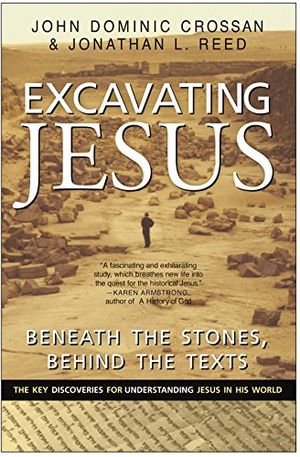
Excavating Jesus: Beneath the Stones, Behind the Texts
/https://tf-cmsv2-smithsonianmag-media.s3.amazonaws.com/accounts/headshot/Sabar_copy.jpg)
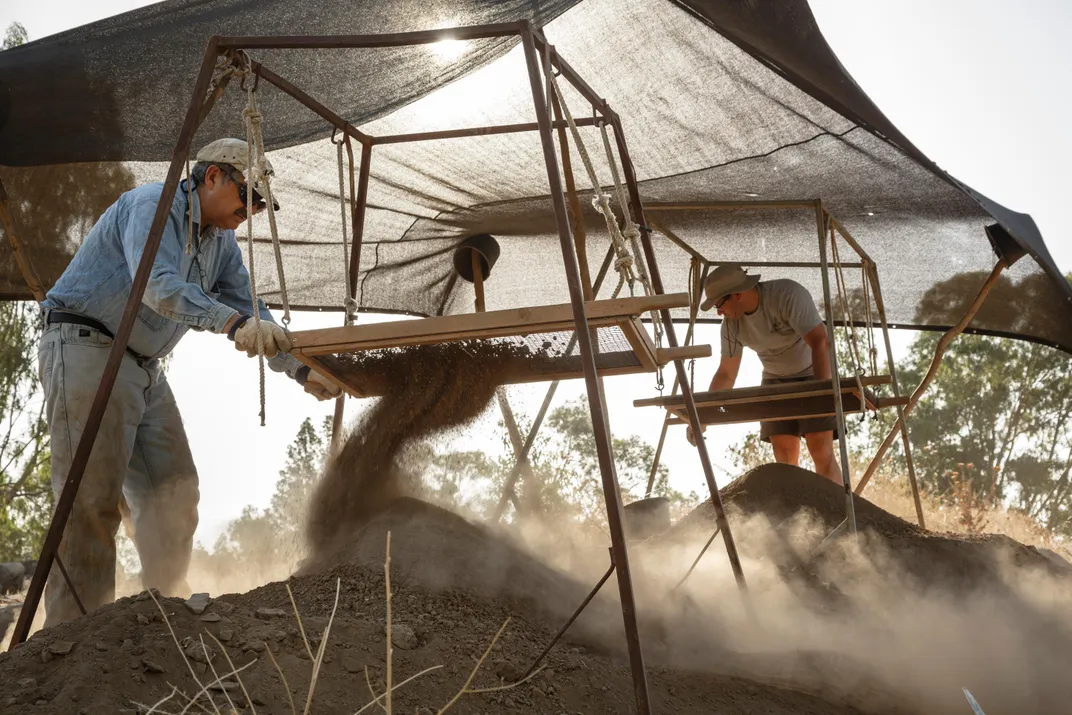
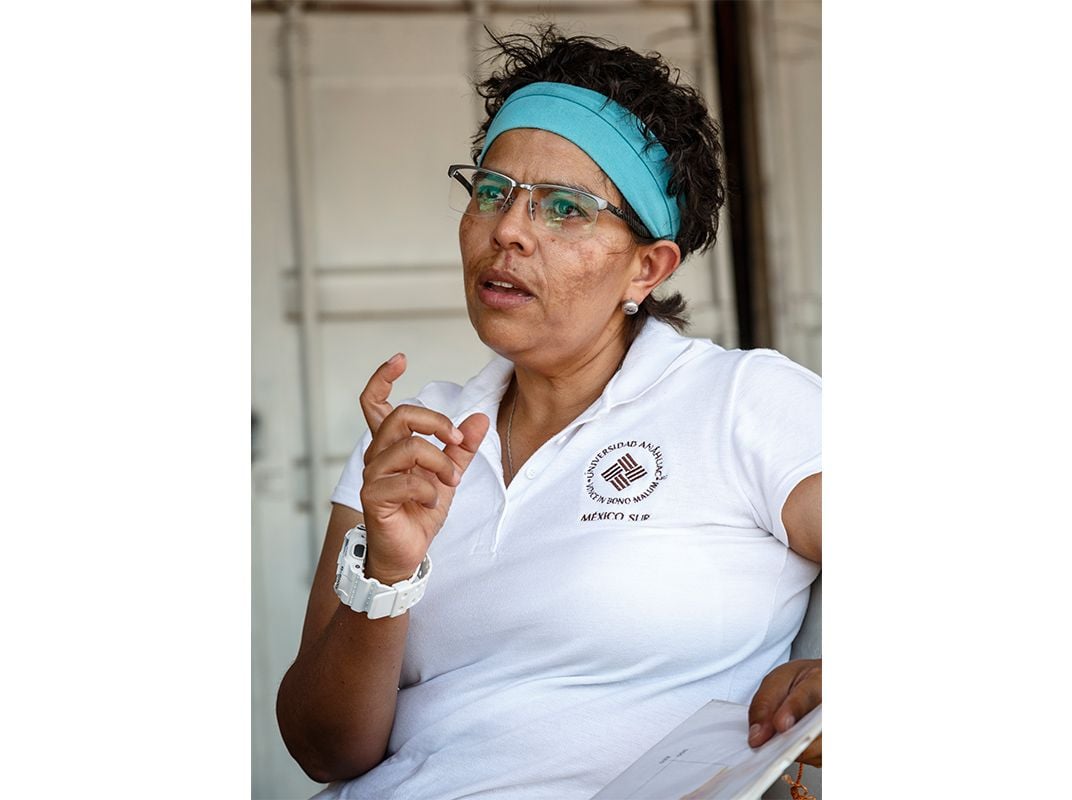
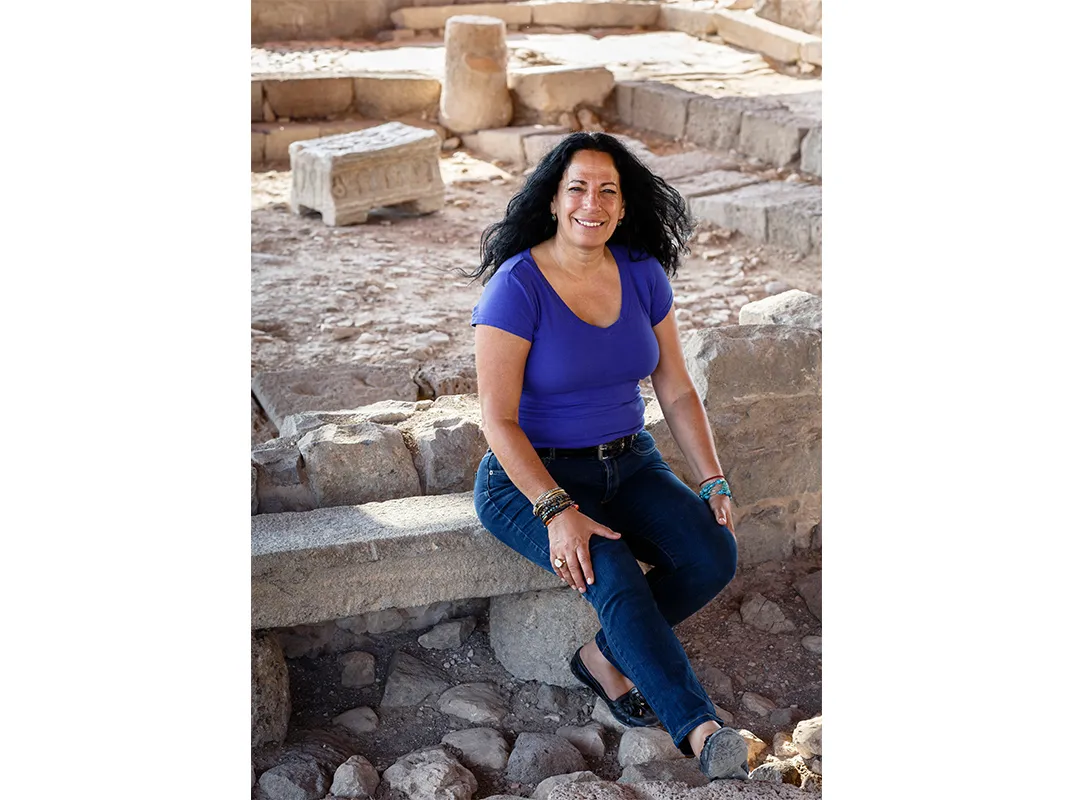
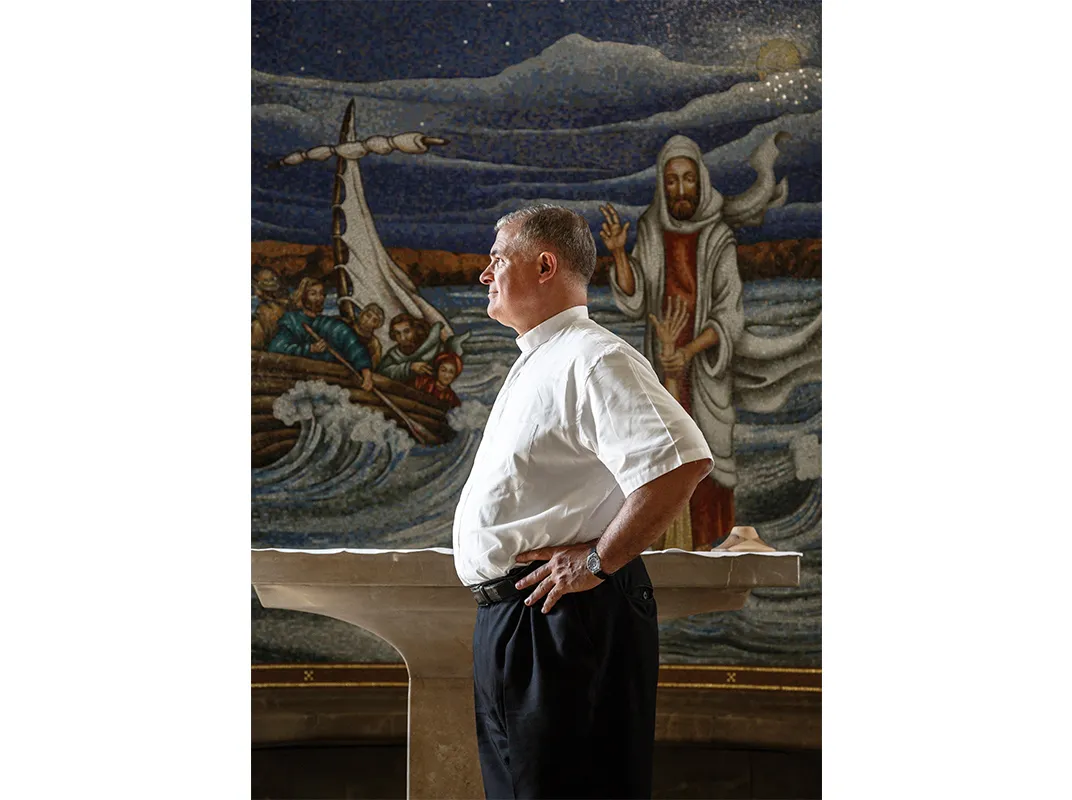
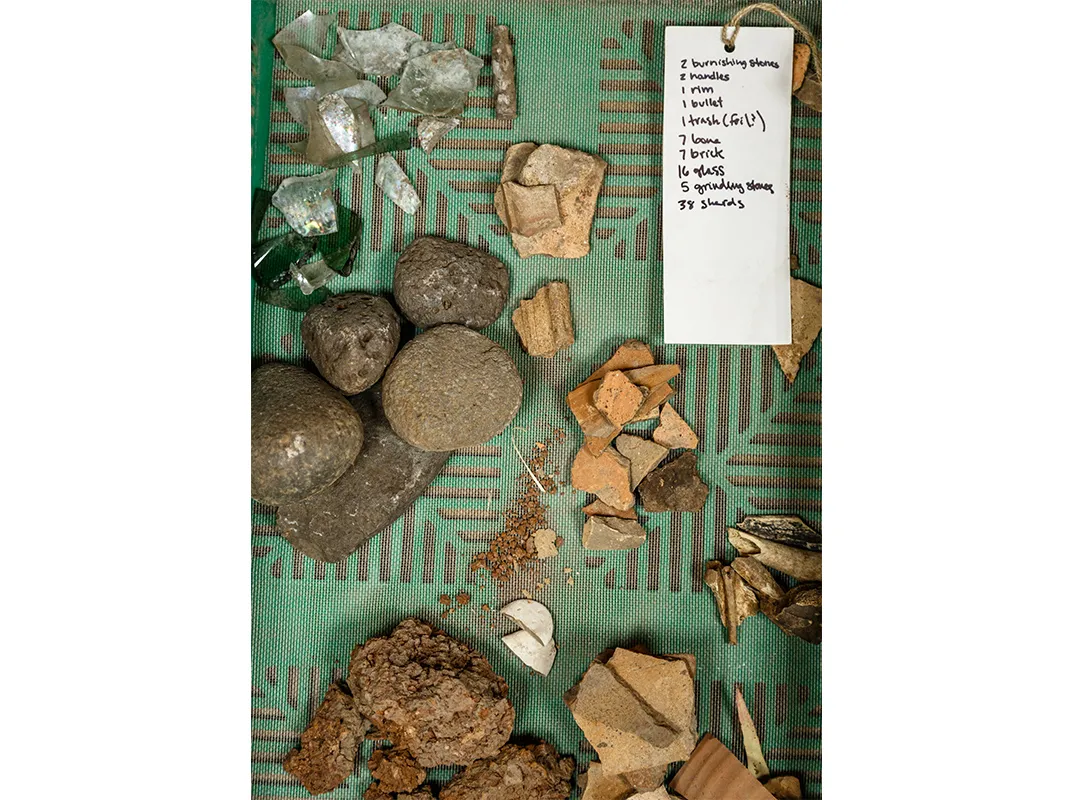
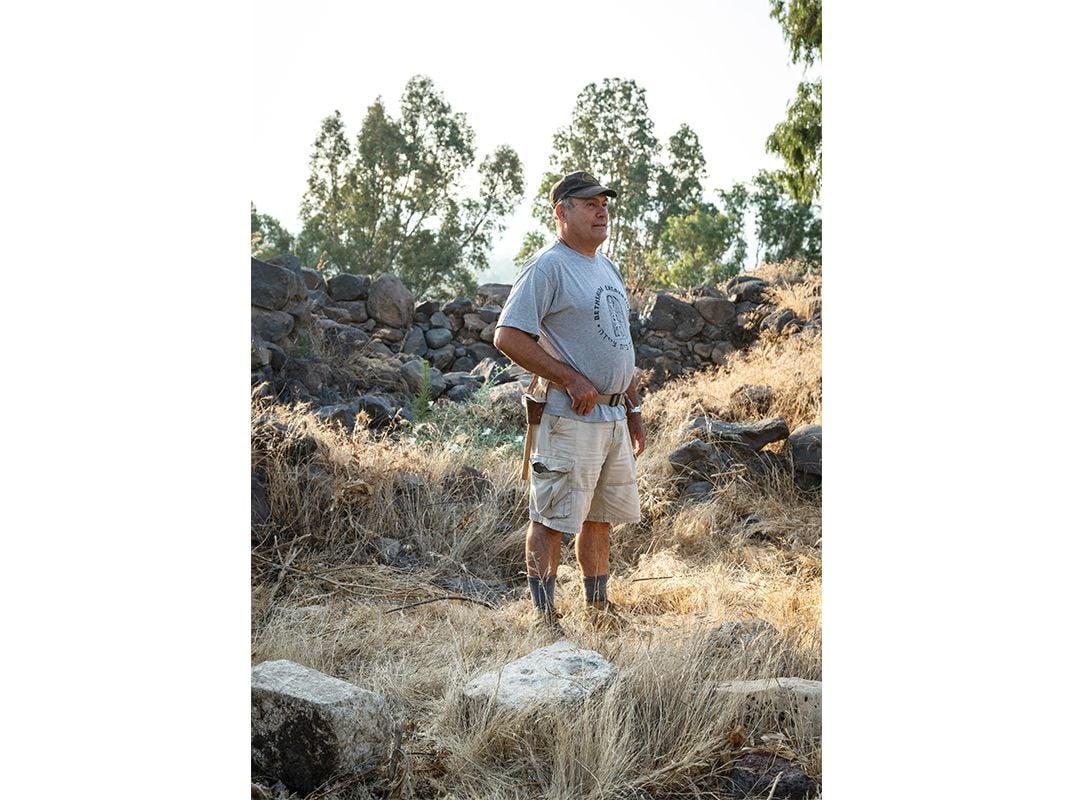
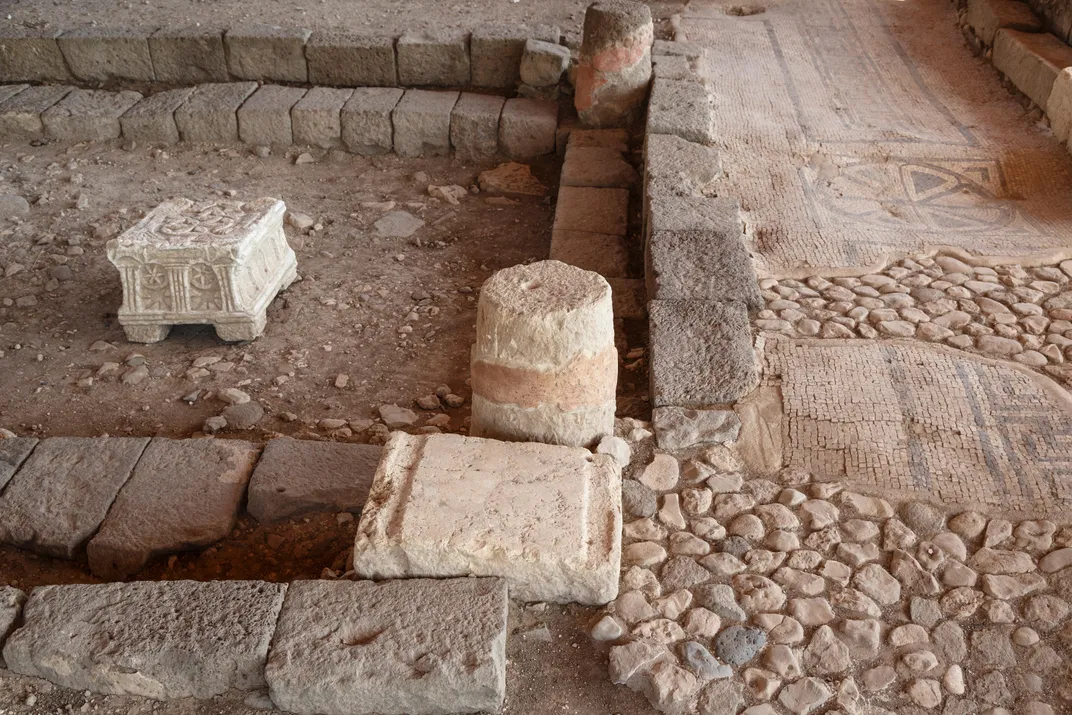
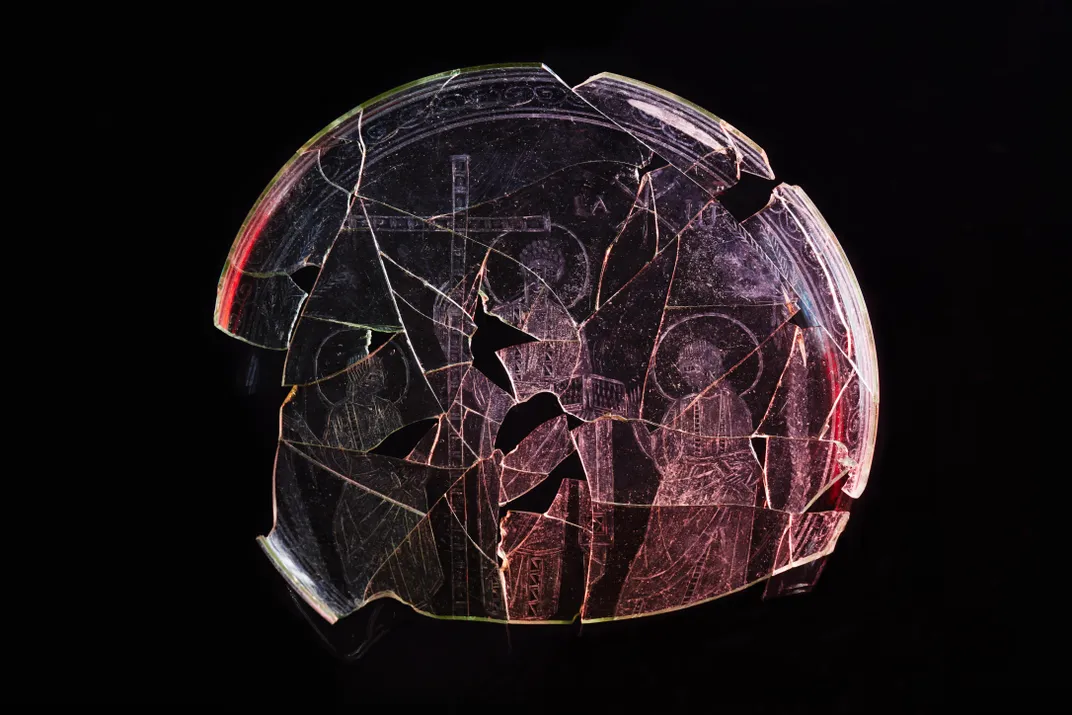
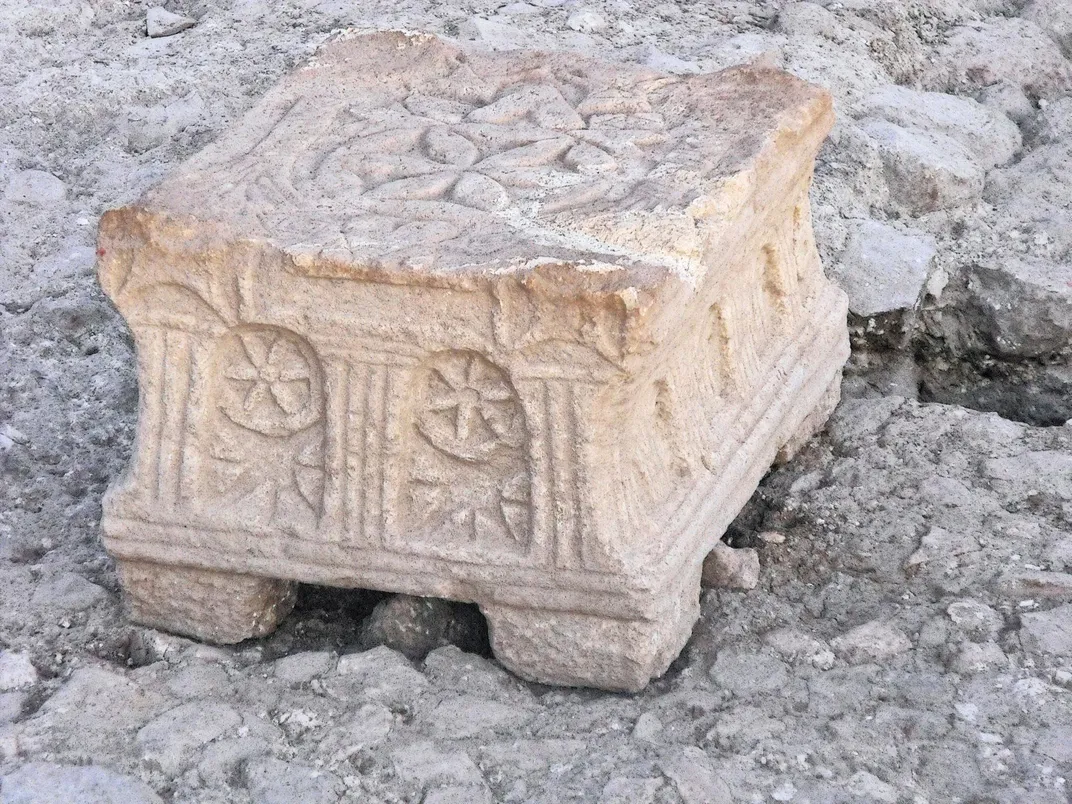
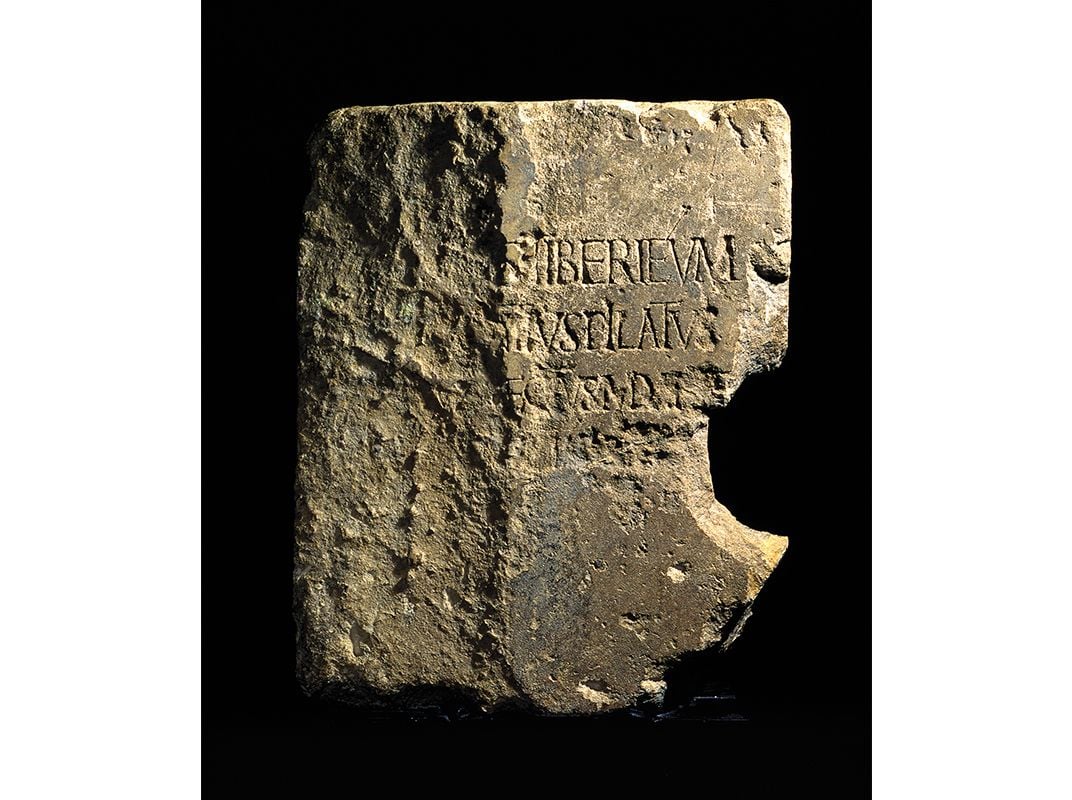
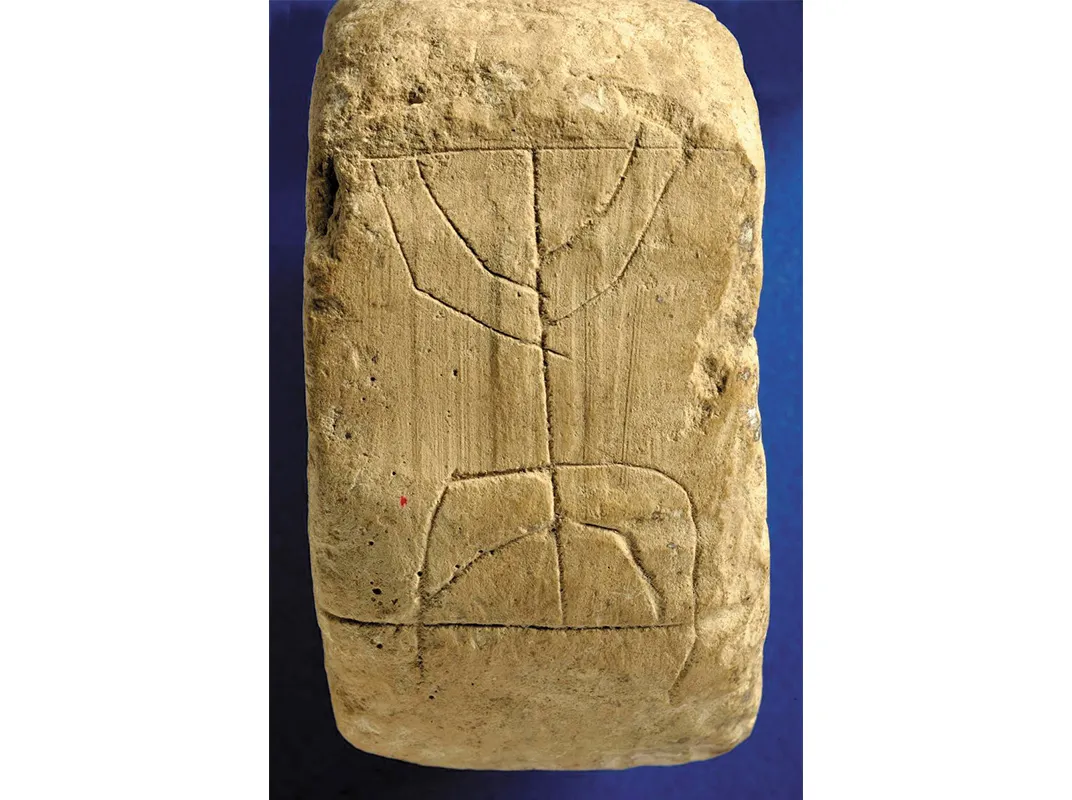
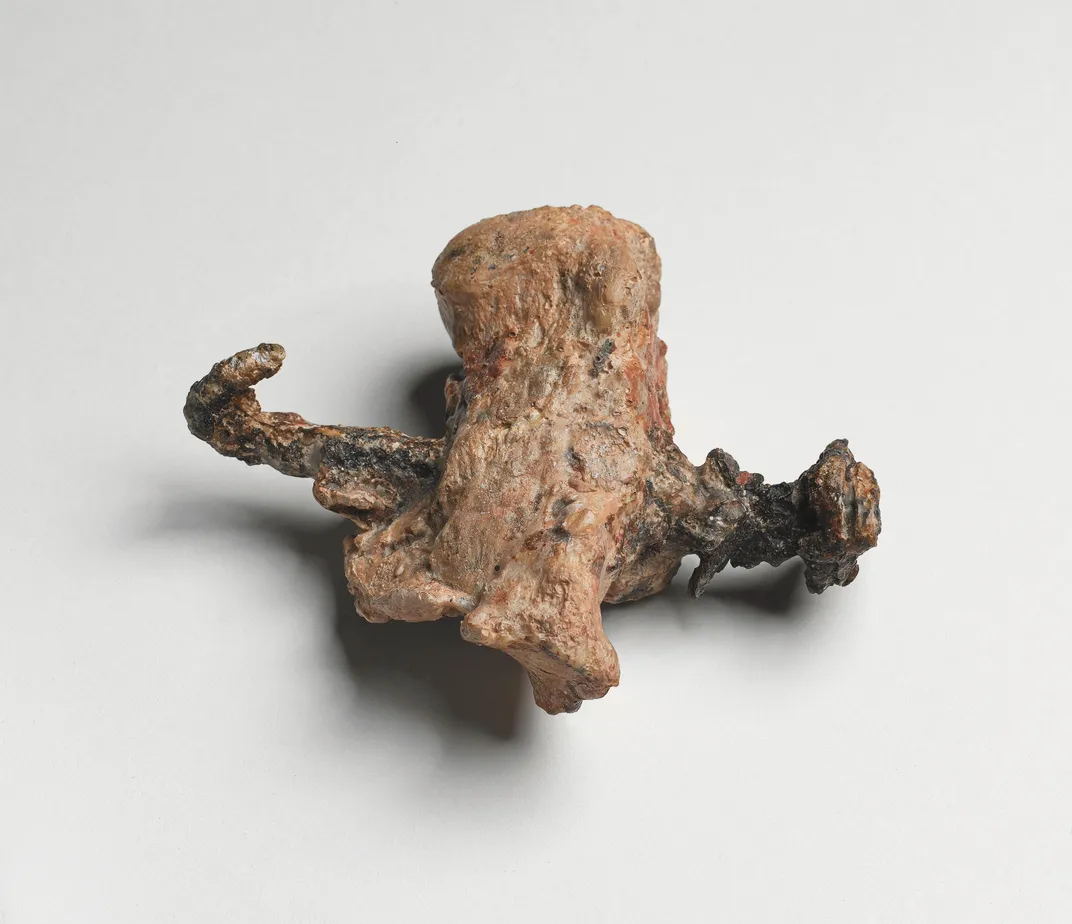
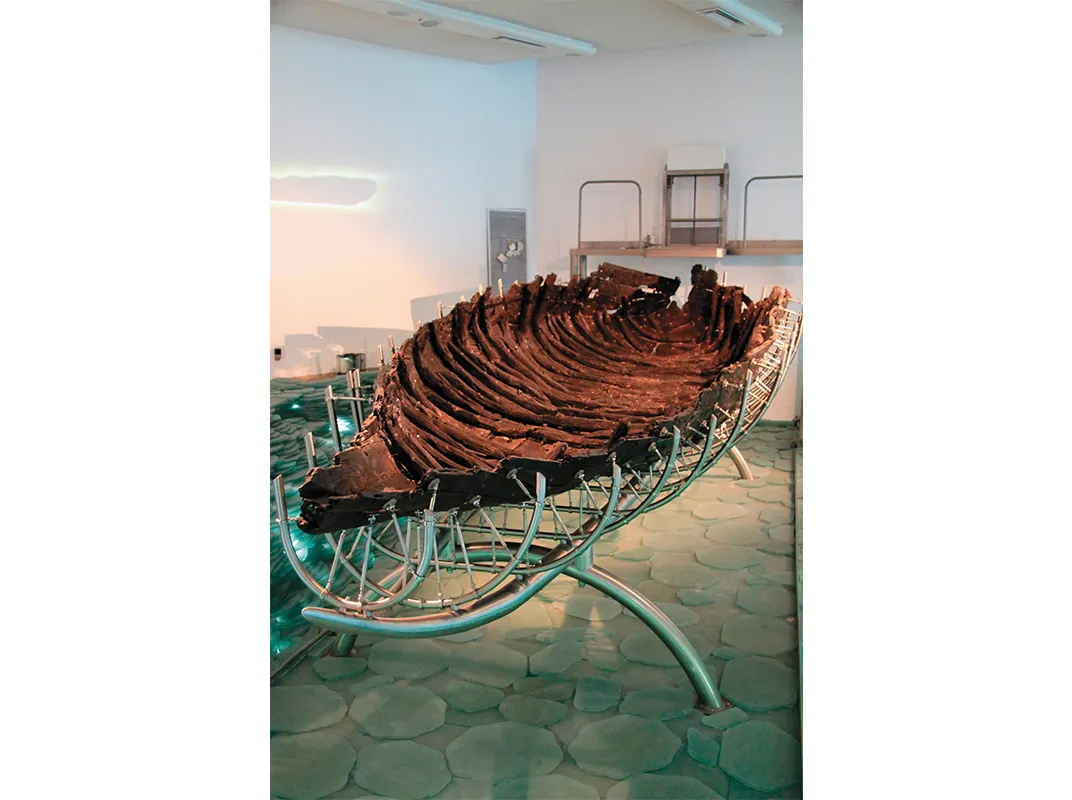
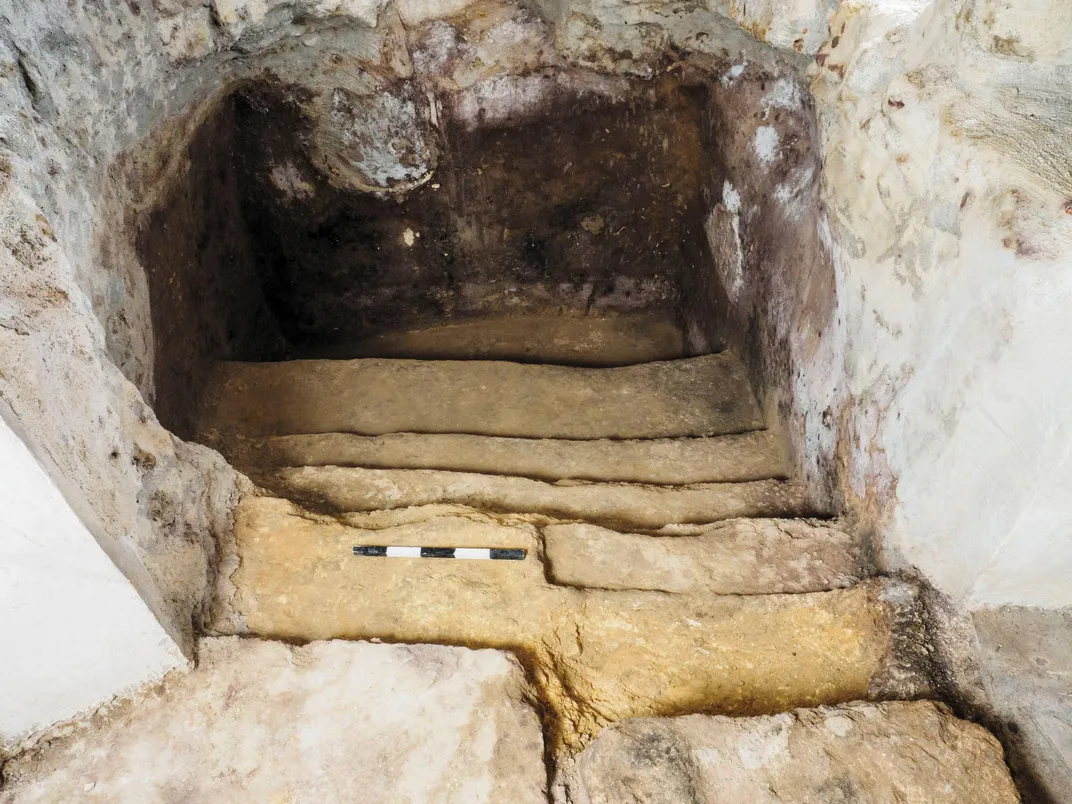
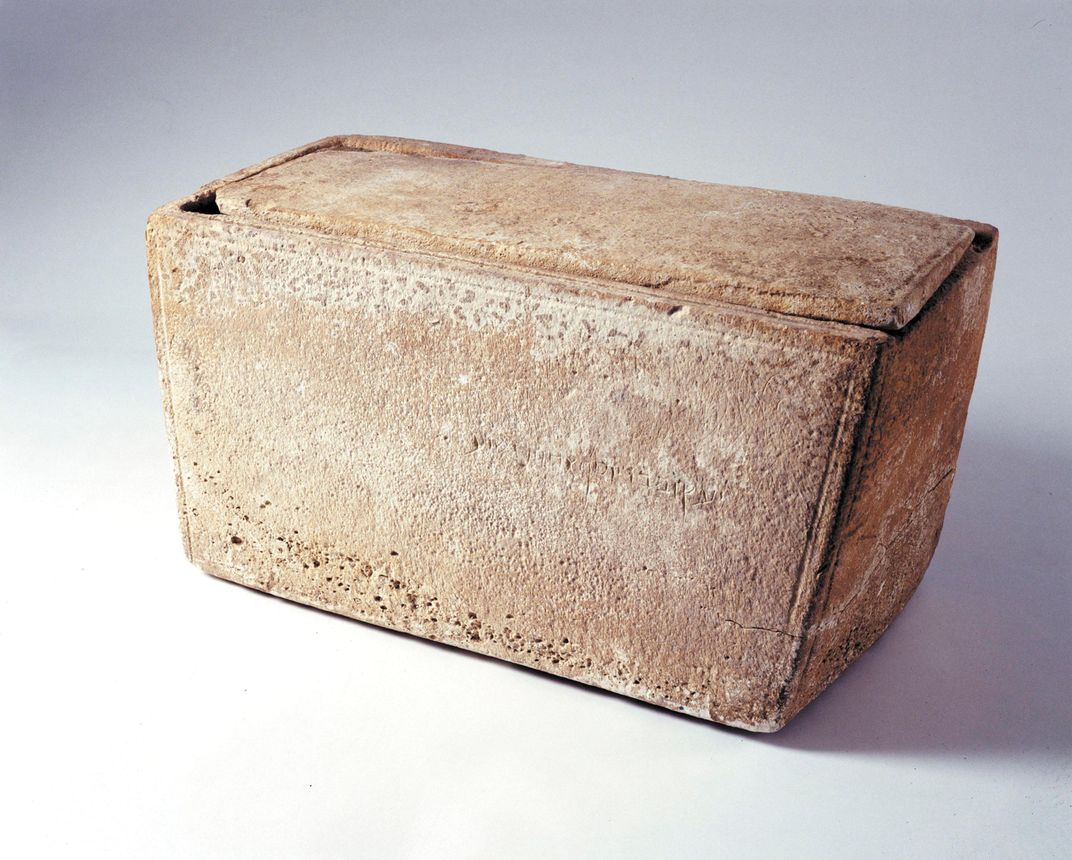
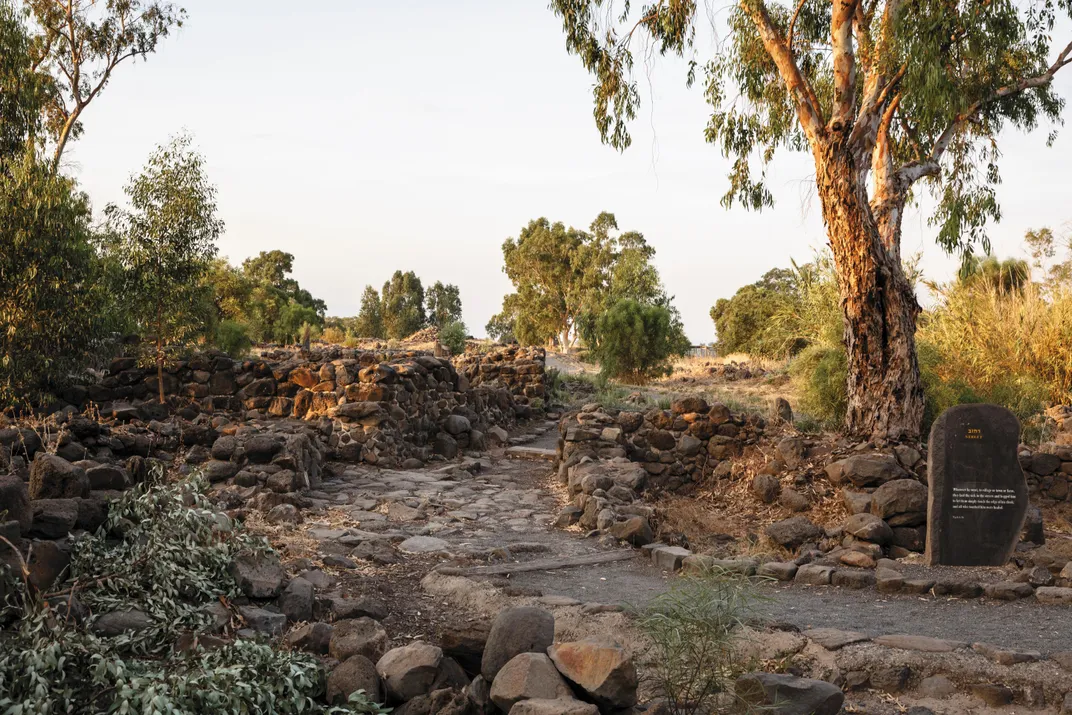
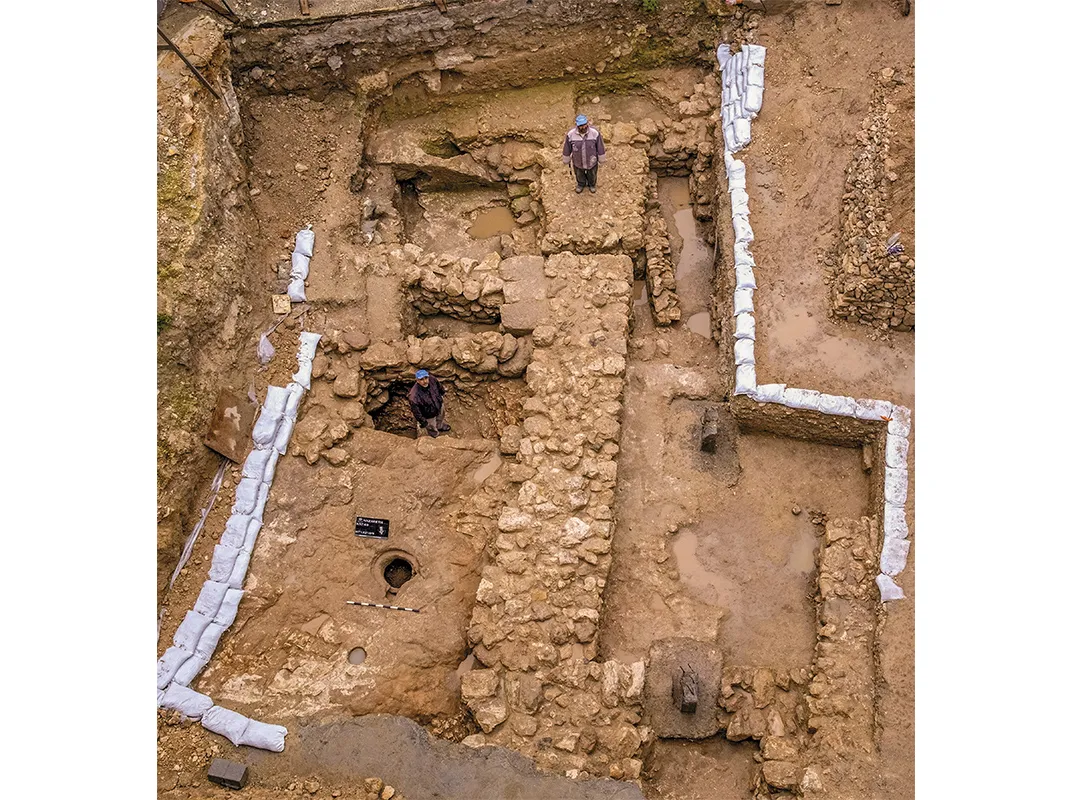
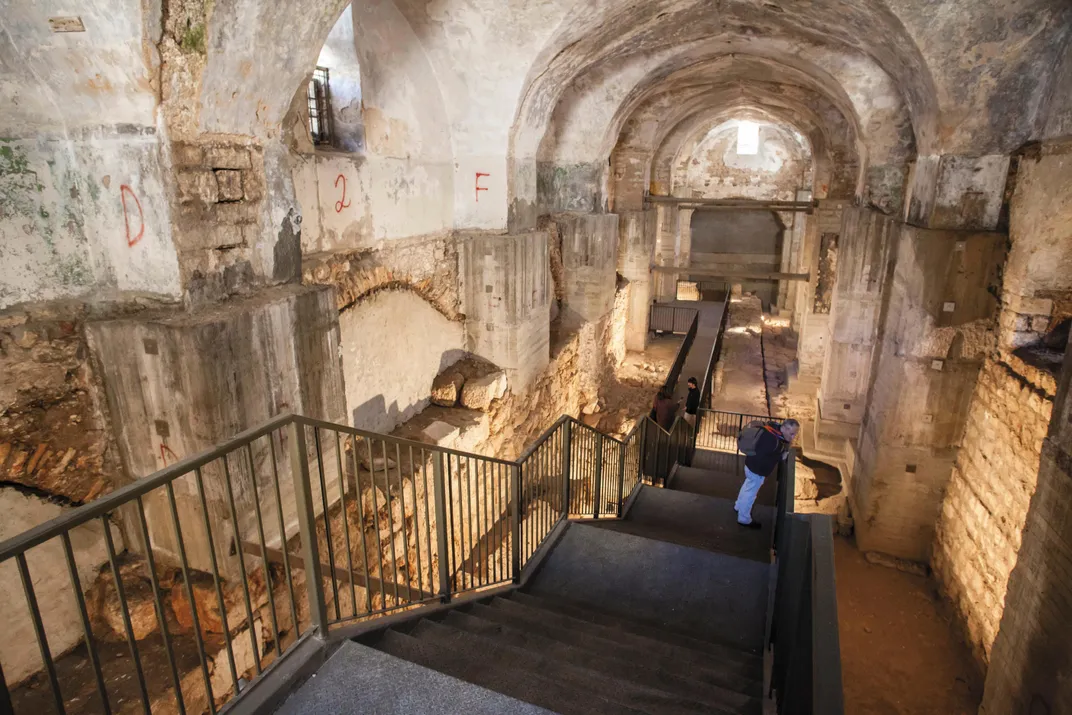
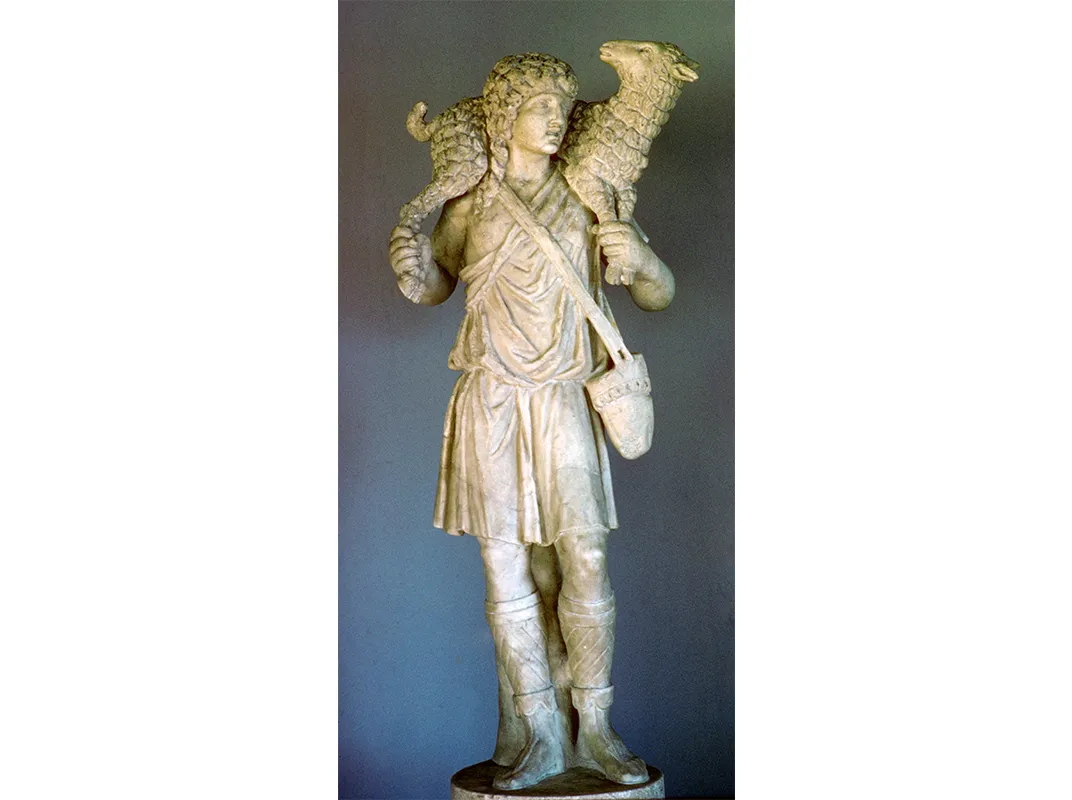
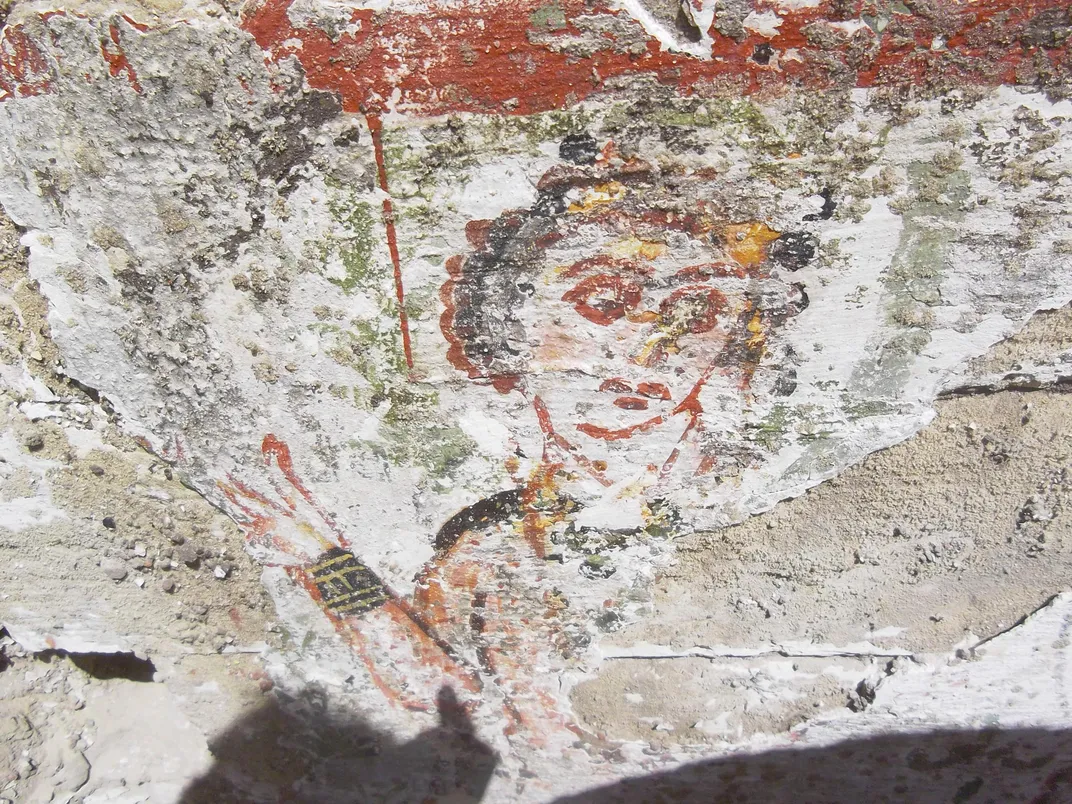
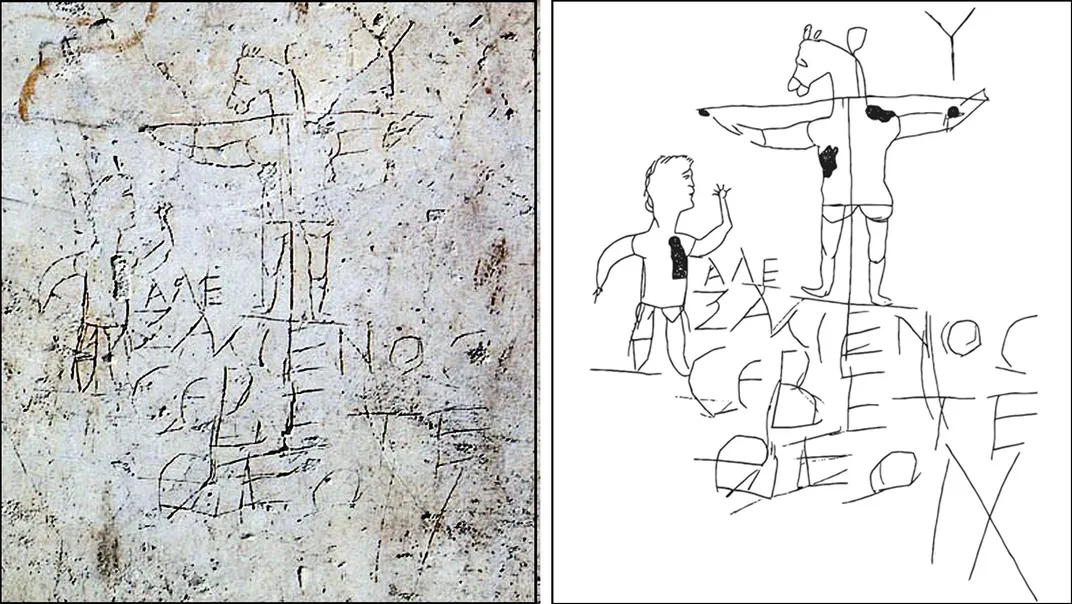
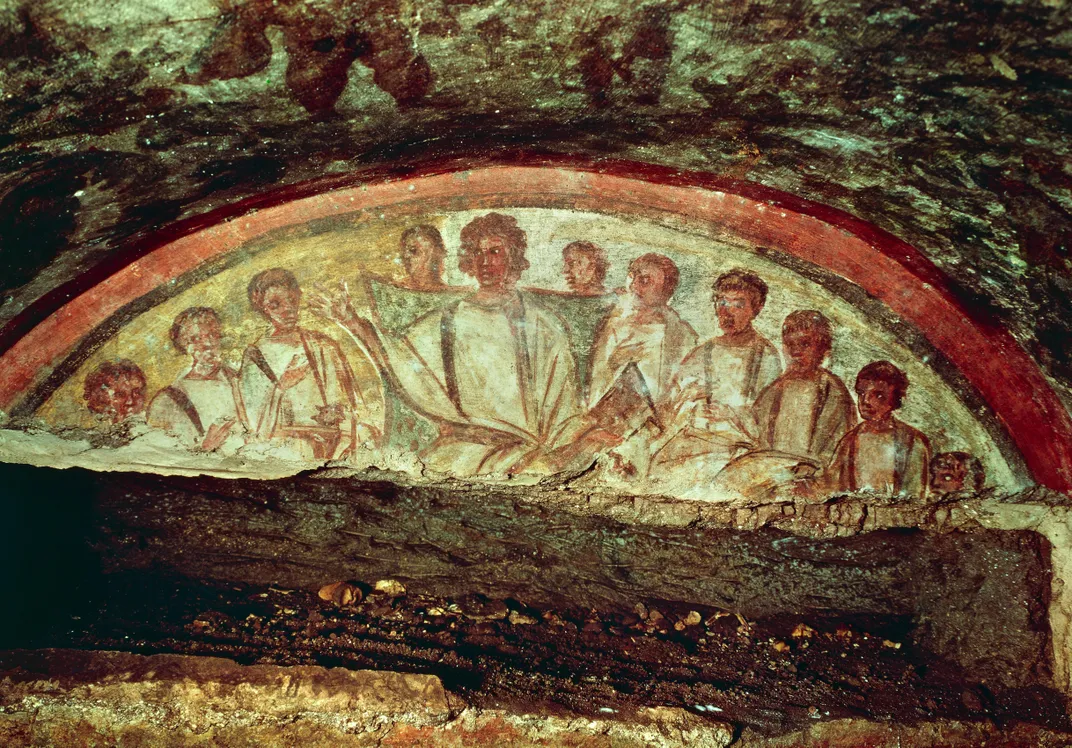
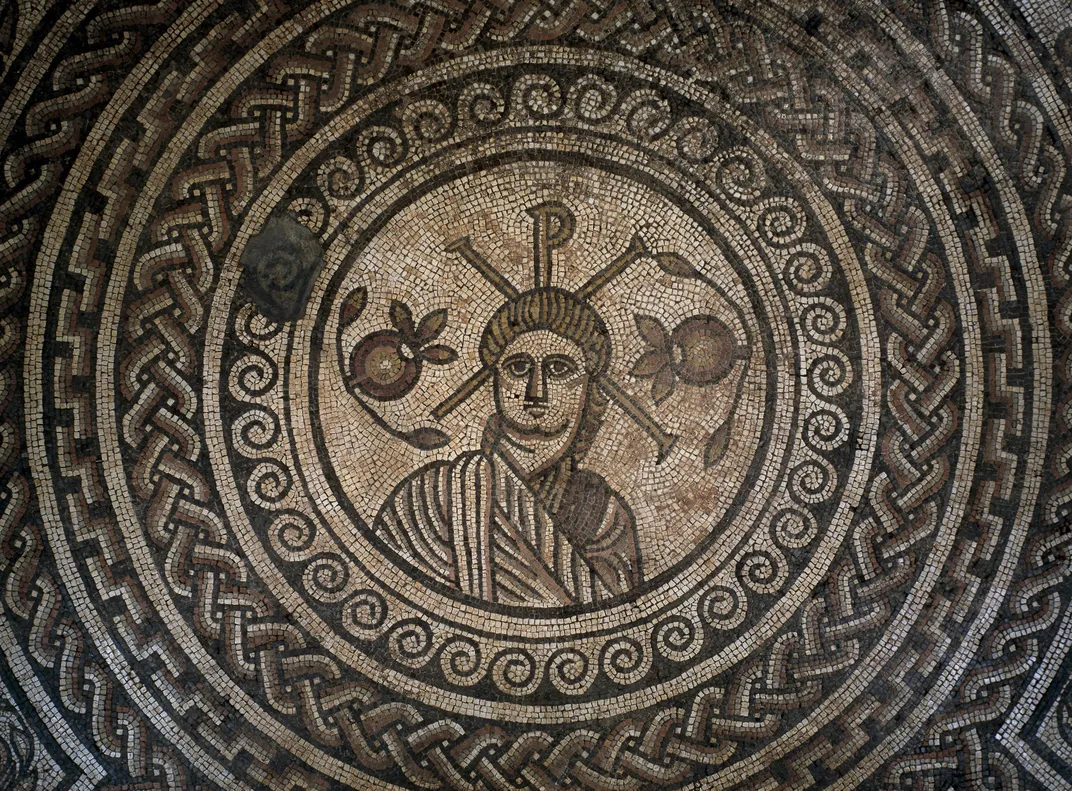
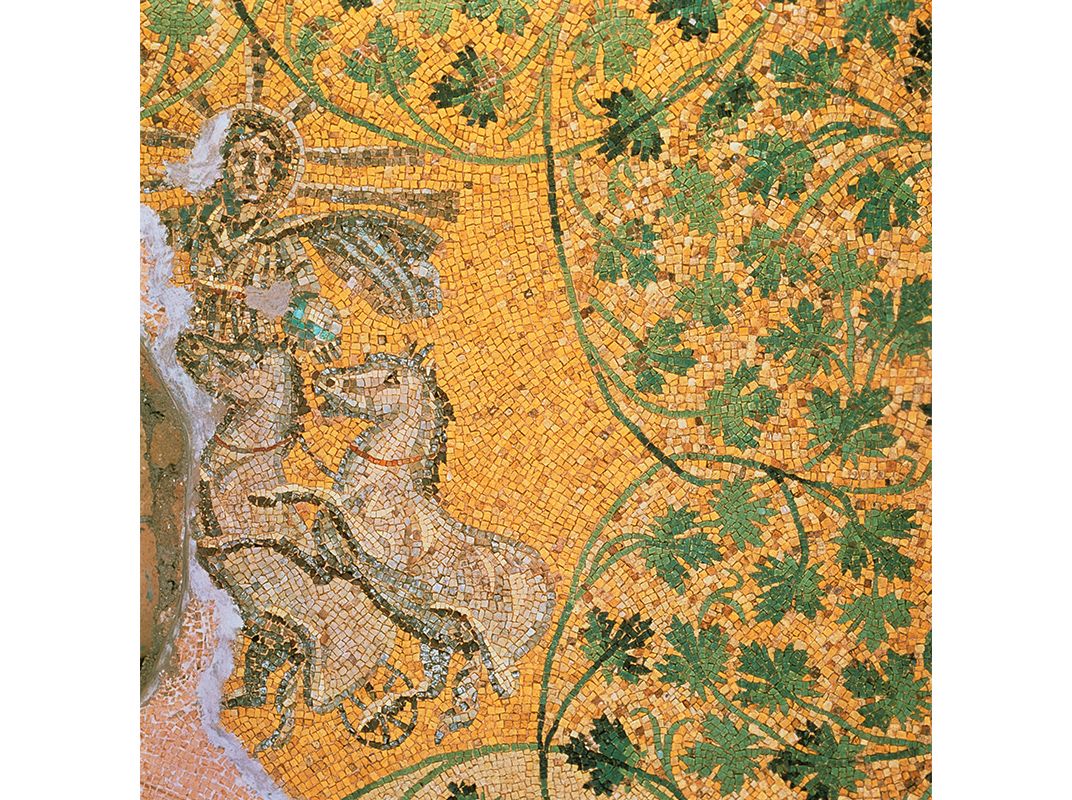
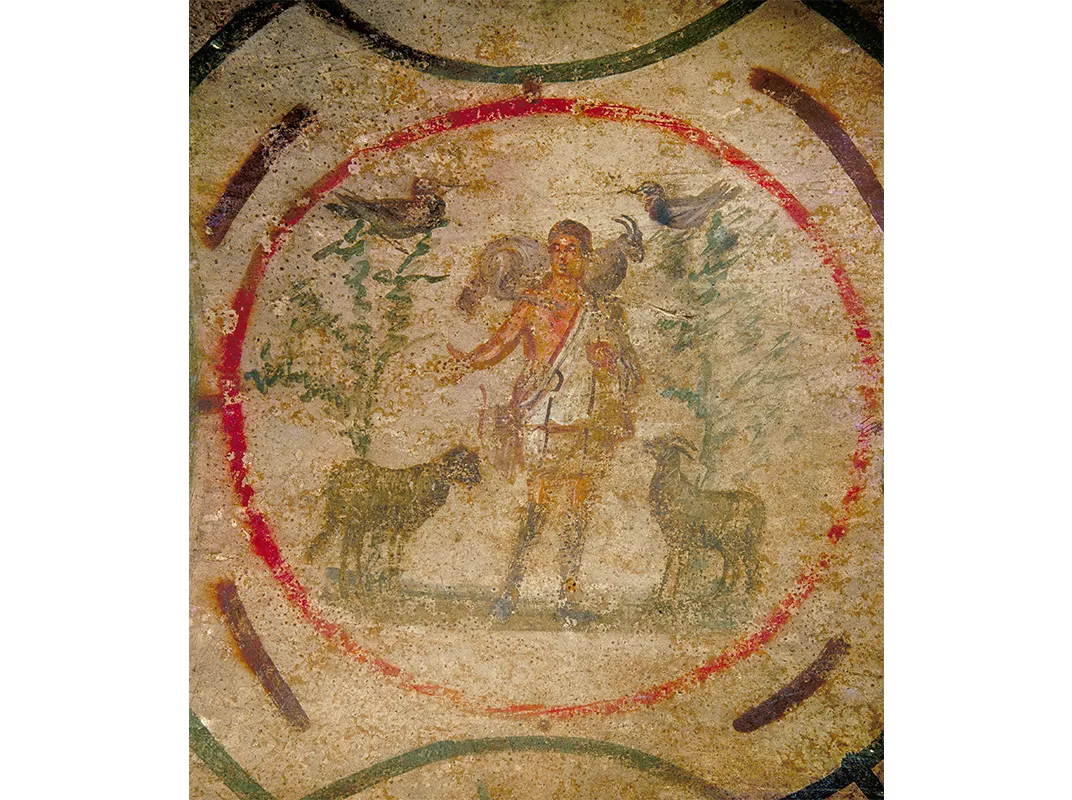
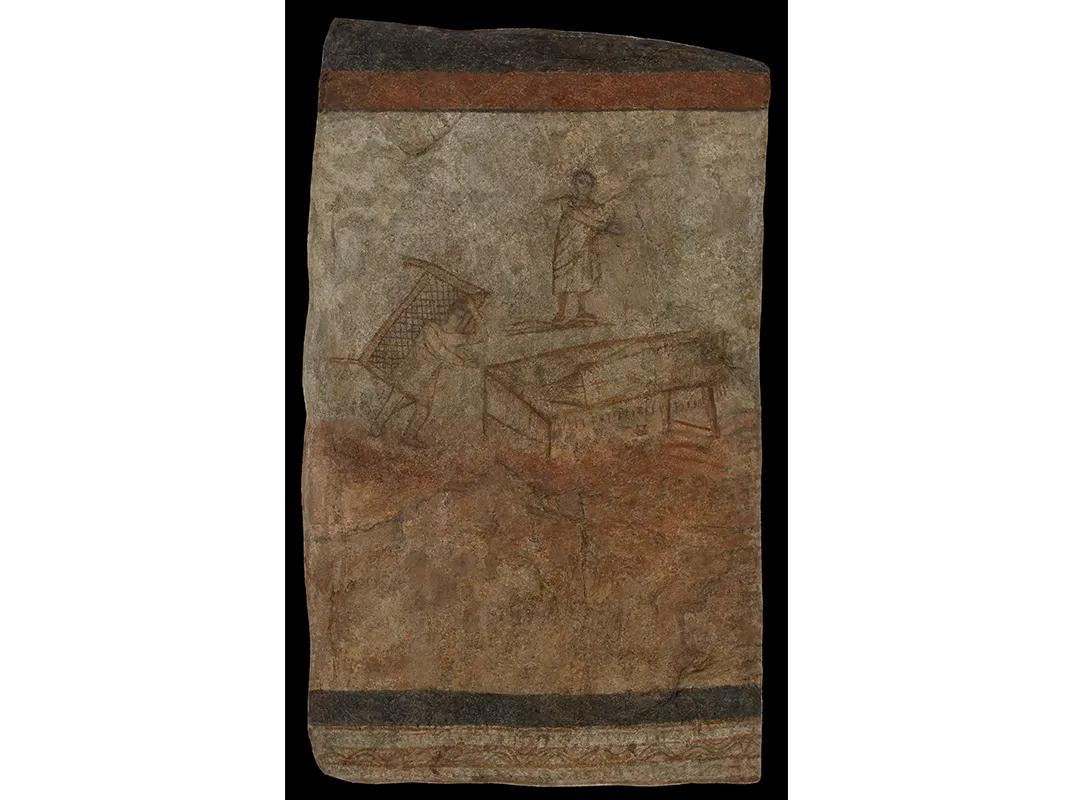
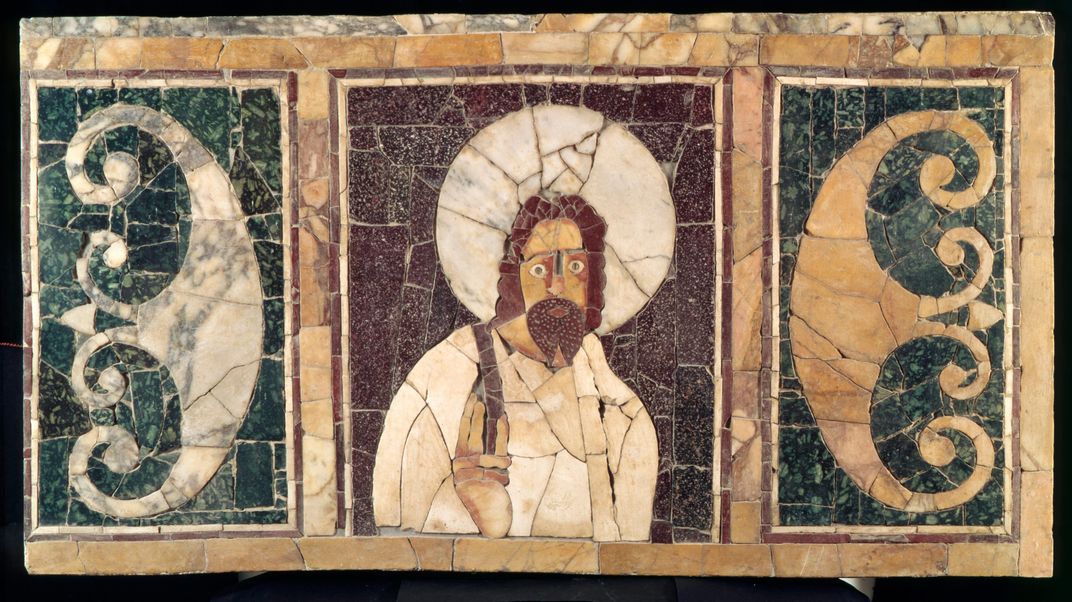
/https://tf-cmsv2-smithsonianmag-media.s3.amazonaws.com/accounts/headshot/Sabar_copy.jpg)